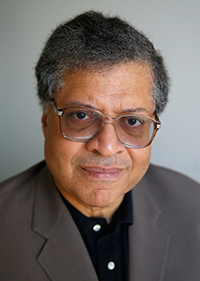It’s possible that I am more addicted to NFL Films than I ever was to the NFL itself. A football game, to the uninitiated, can be a static, unwieldy thing to behold. Half the idea of the game, after all, is to stall forward motion. Depending on the circumstances, that, too, can be exciting, even beautiful. But you have to pay attention to what’s happening to appreciate such moments. And it’s all too easy to let the mind wander during those raw stretches of time-outs, replays, penalties and, everybody’s favorite, running out the clock.
But what if you isolate the high points of a game, tighten the focus on the players in mid-air or mid-tackle, season the moments with the soundtrack of growling, howling voices at collision point and sweeten them with orchestral music that either accentuates the tension or amplifies the humor? String such moments into a narrative and you can make an unsuspecting viewer fall in love with football to the point of being able to watch a whole season, maybe several, of complete live games. NFL Films did that for me and, I suspect, for tens of millions needing side-door access to the Leviathan of American Sport.
Steve Sabol, who died yesterday at age 69 from brain cancer, was likely more responsible than anyone else for making me conversant with professional tackle football. His father Ed may have founded the Mount Laurel, N.J. company that helped sell the NFL product to the masses. But it was Steve who more definitively fused its destiny with that of the league – and, in the process, connected most directly with the romantic film nerd in me. He could make a regular season Dolphins-Raiders grudge match look and sound like “Captain Blood” and you knew he’d been not only steeped in Michael Curtiz, but also knew his John Ford, Howard Hawks, Raoul Walsh and…yes, even his Gene Kelly. Getting the footage was one thing; knowing how to get the best use of that footage, to play it over and over again without letting anything get stale were qualities that the best producers and directors, whatever their budgets or objectives, could appreciate.
To be sure, he had some of the auteur’s healthy egomania, however blithely worn. John Facenda may have been the Voice of God in all those Super Bowl highlight reels. But it was Steve Sabol’s face you would always see as he pulled back the curtain on his company’s proudest possession: Those miles and miles of archival footage going as far back as the ghostly, grainy black-and-white films of Don Hutson and Sammy Baugh through the wired-for-sound sideline rants of Vince Lombardi and Hank Stram to the present-day glossiness of Los Bros. Manning driving their teams to league titles. Sabol’s presence on NFL Films compilations sort of reminded you of Walt Disney hosting his weekly TV series, introducing you to his own product week after week. One way or another, whether it was Disney or Sabol, you were going to know who was responsible for creating their Wonderful Worlds. (Which was fine. Sabol got to be pretty good at hosting and better at interviewing, drawing rich, illuminating anecdotes from, among others, those iconic ex-teammates Jim Brown and Bobby Mitchell.)
To my mind, this clip from the official Super Bowl XIII highlight film exemplifies everything that made the NFL Films brand inimitable: Editing, music, narration, pacing, Facenda’s mighty chords and sheer unapologetic rapture for the sport. You don’t have to be a Dallas Cowboys fan to get caught up by it. (I’m not and I do.)
As with Disney, the NFL Films universe was hype, glory, mythic storytelling and some overheated hokum. And as with Disney, it was a blend powerful enough to stir the grandest dreams. It could even influence directors as great as Sam Peckinpah, who acknowledged the influence of NFL Films on his slow-mo gunfights in The Wild Bunch. Sabol and his talented staff could not only pump things up, but deflate them, too; either with montages of botched snaps, backfield slips and improbable fumbles or with the self-deprecating, rueful testimonies of ex-players and coaches who enhanced the ground-level humanity of what often seemed a dehumanizing process. I especially appreciated the often earthy anecdotes of ex-Baltimore Colts such as Art Donovan or Alex Hawkins, who recalled a bacchanalian team dinner at Hollywood’s Brown Derby after a painful loss to the Rams. Louella Parsons came over to a raucous table of Colts and introduced herself to the legendary quarterback Johnny Unitas. Hawk recalled that a tipsy Unitas peered at Parsons from behind his seat and invited the grande dame of gossip to “sit your ass down and have a beer.”
Maybe there should have been more stories along the way about the game’s long-term damage to its players. But Unitas helped NFL Films on that, too, by agreeing to a 1999 HBO profile if he were allowed to talk about his dispute with the league over the lack of compensation to retired players for post-career debilitations. Indeed, the HBO-NFL Films collaborations, including the recent Lombardi and Namath bio-pics are among the crown jewels of the Sabols’ company, attentive to character flaws and social turmoil without in any way mitigating their subjects’ epochal personae.
With Steve Sabol’s passing, there are some voices already saying that NFL Films should be granted the same canonical status as Ford, Hawks and other masters of American high-adventure filmmaking. I’d be OK with that, though it’s hard at the moment to imagine anyone who’d be better at packaging all that raw footage than Sabol. For the moment, I’m happy to use whatever idle moments I have wandering YouTube and other sites for pieces of the dream Sabol fashioned with such shrewd, yet wide-eyed panache.
